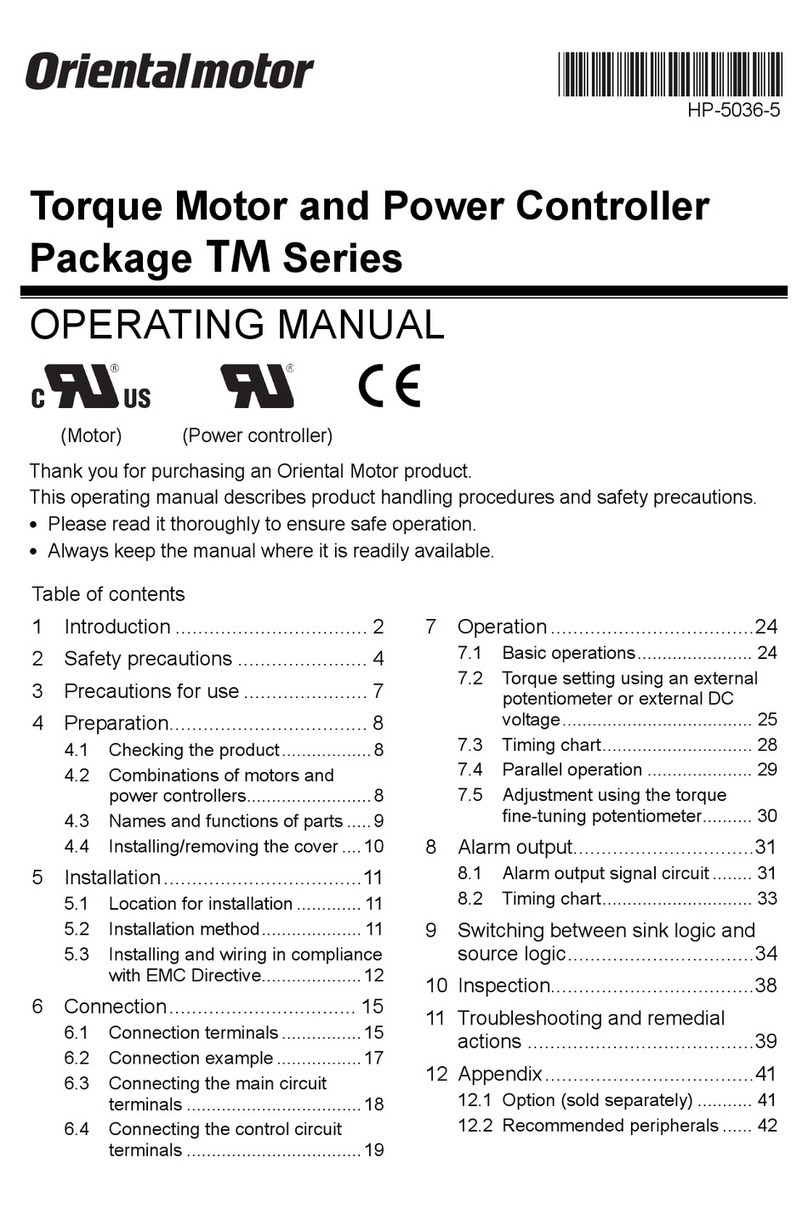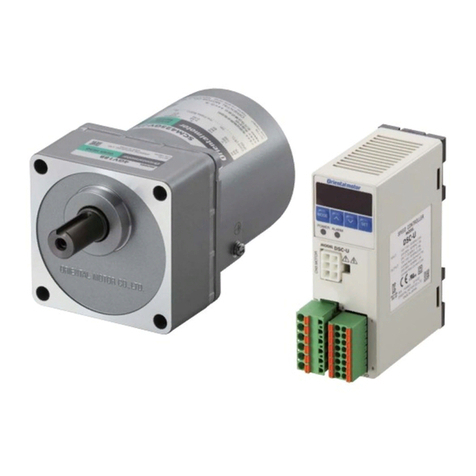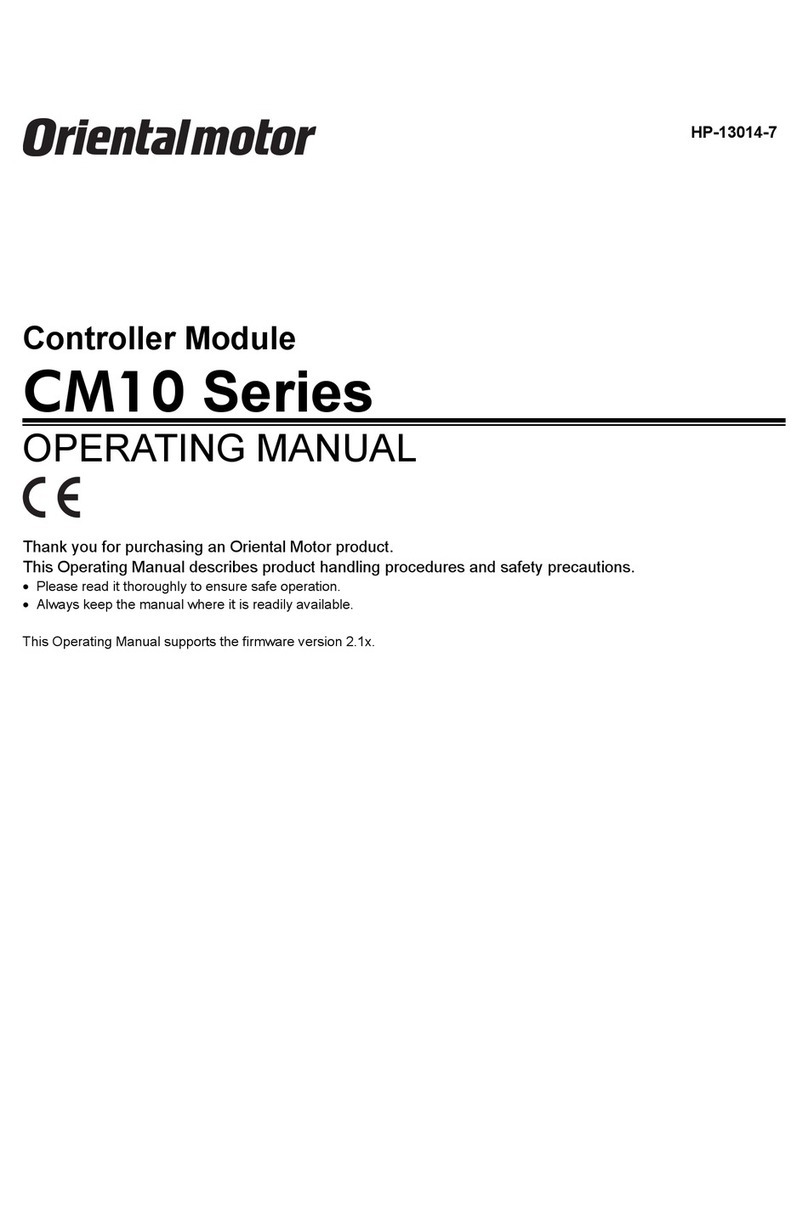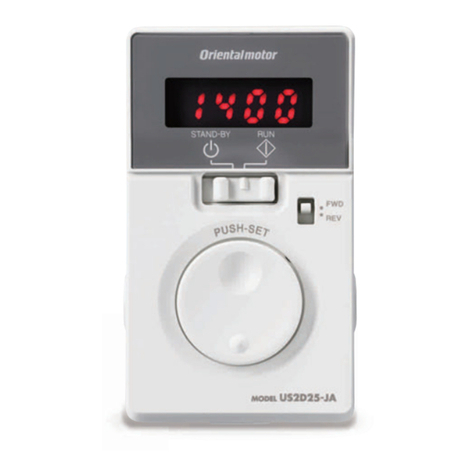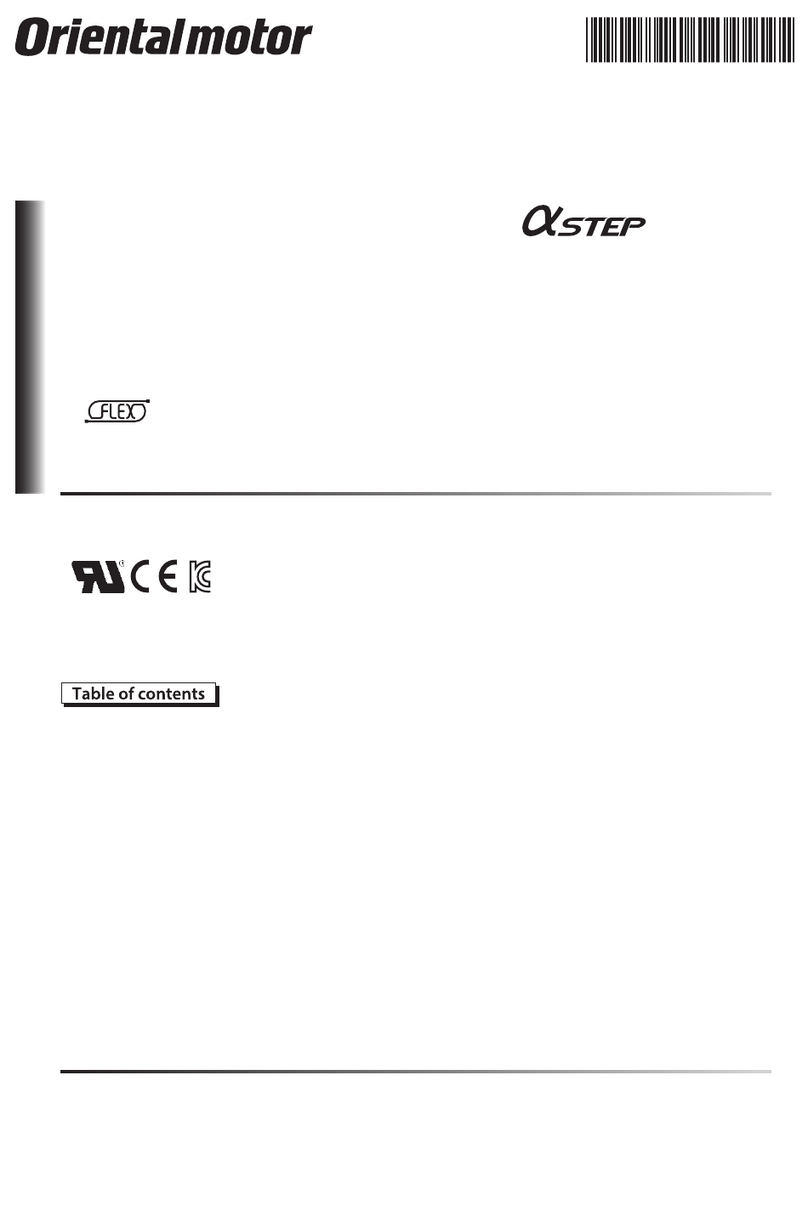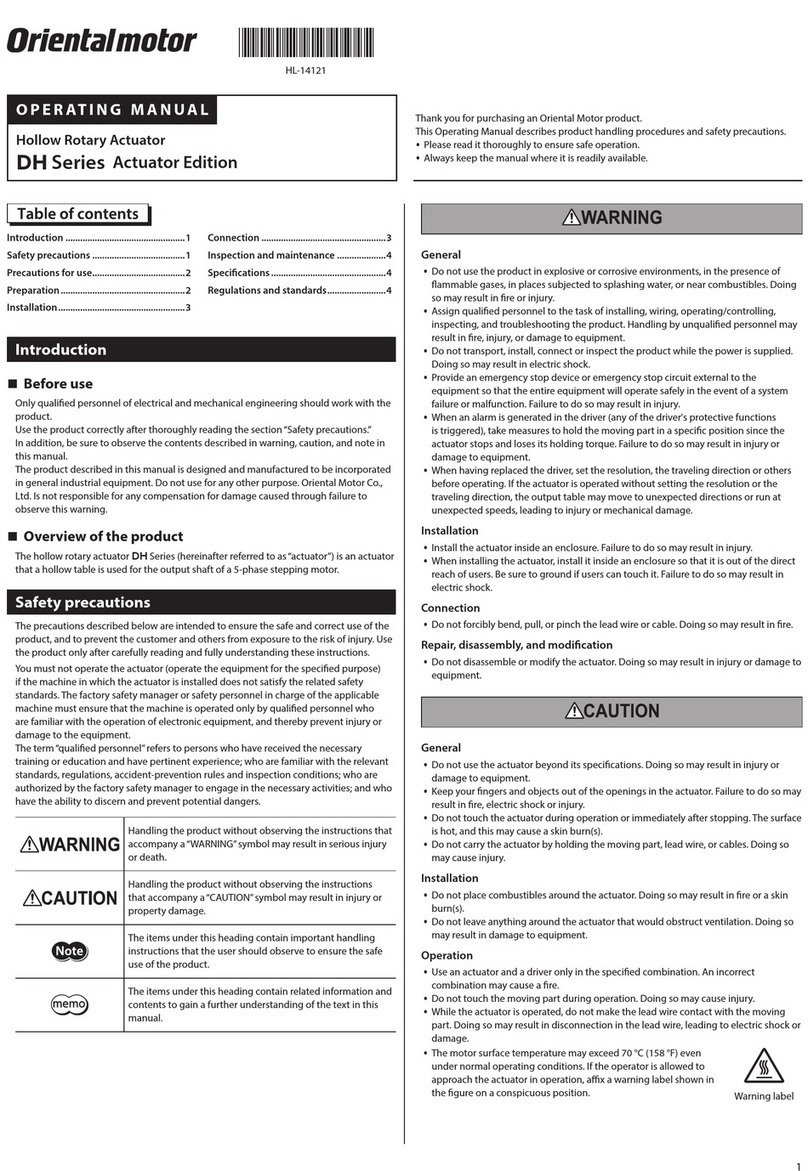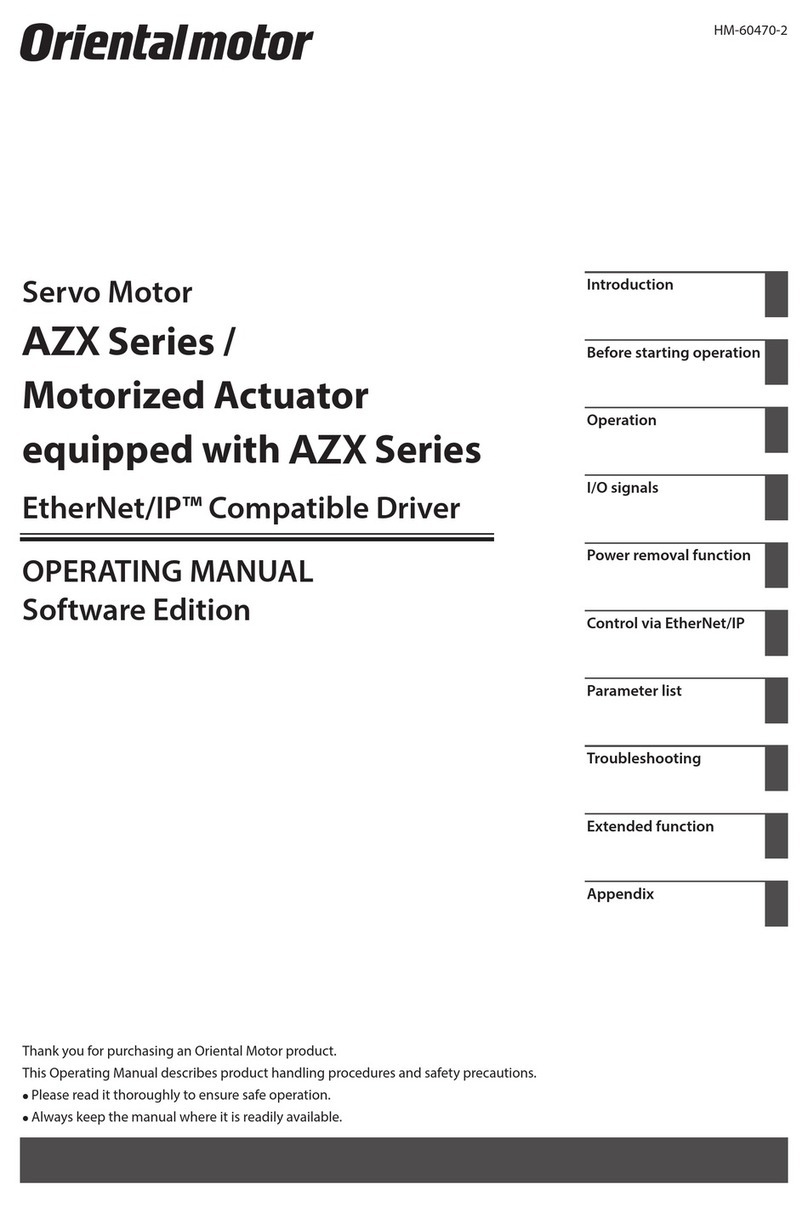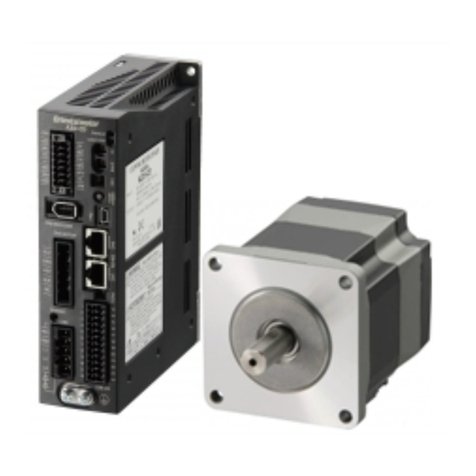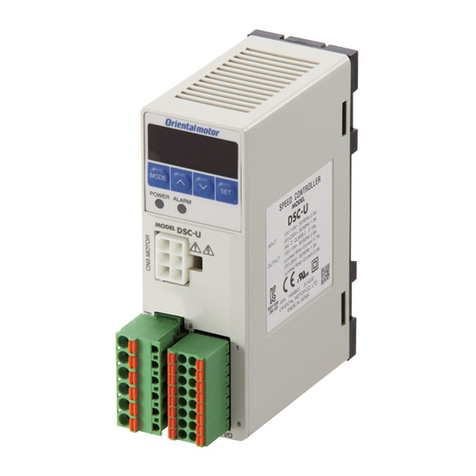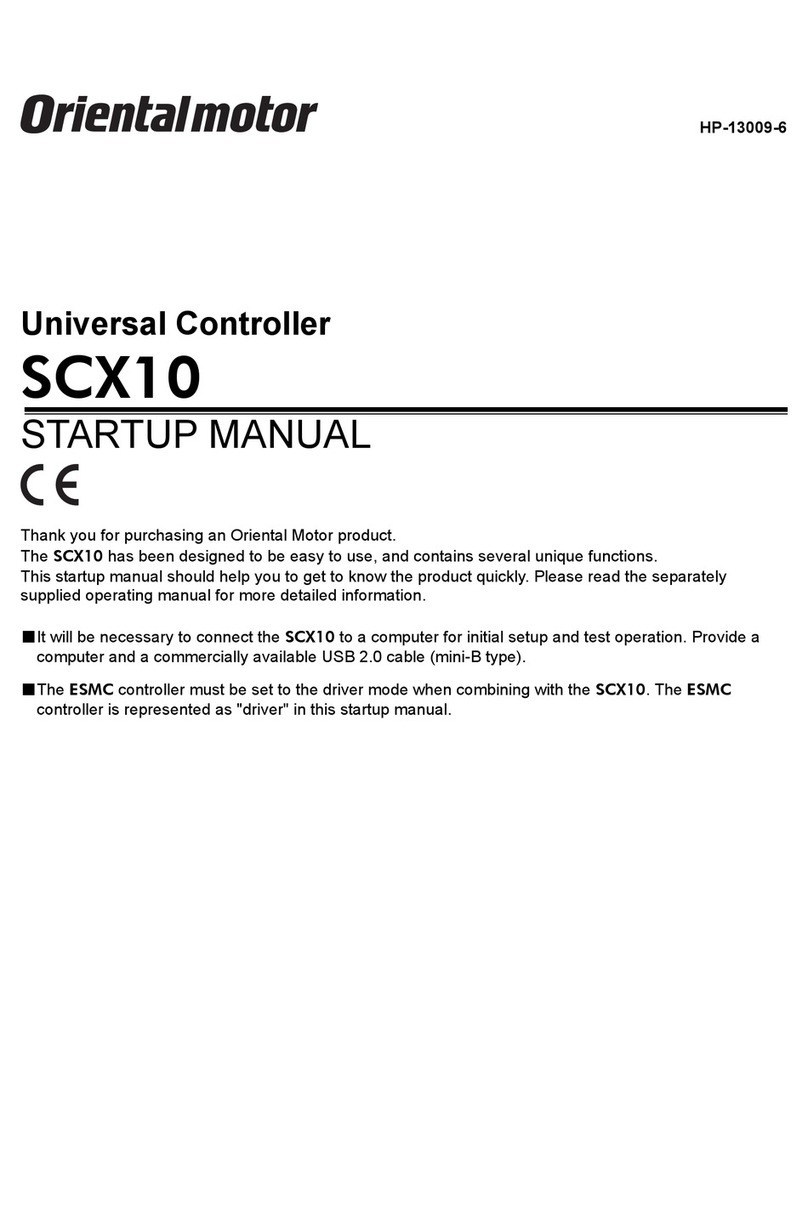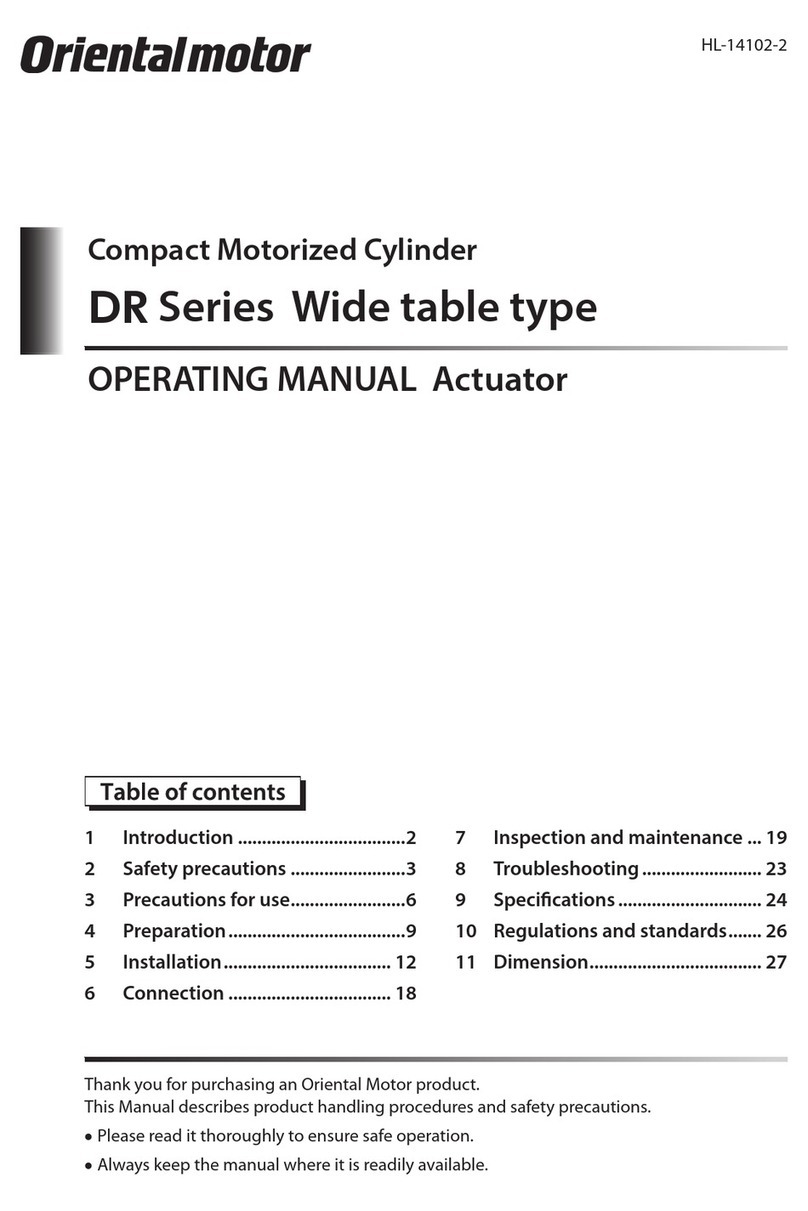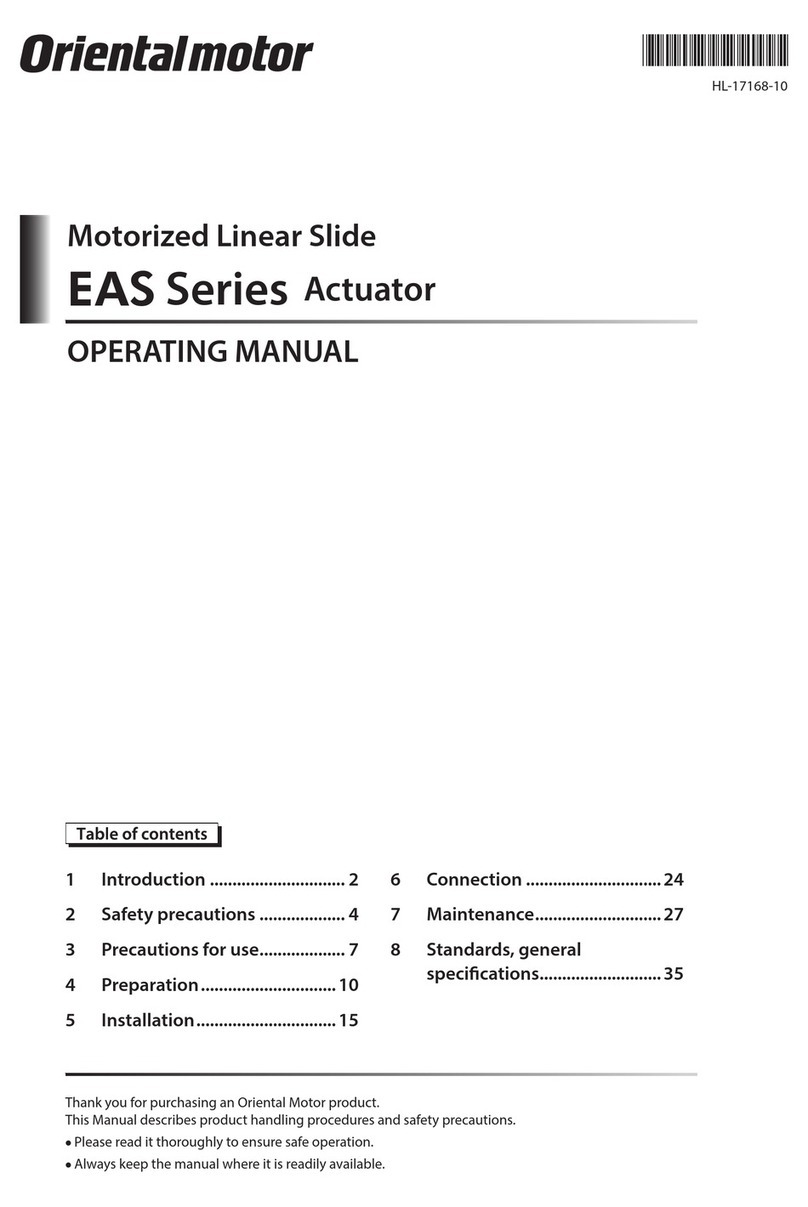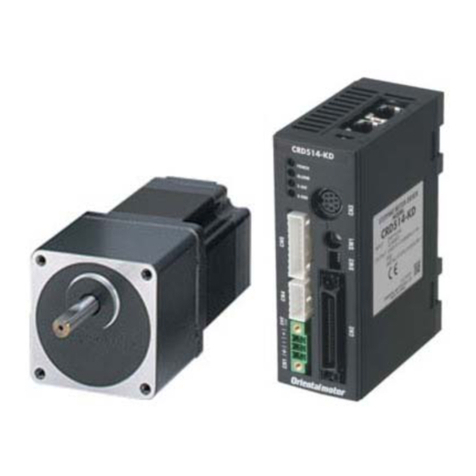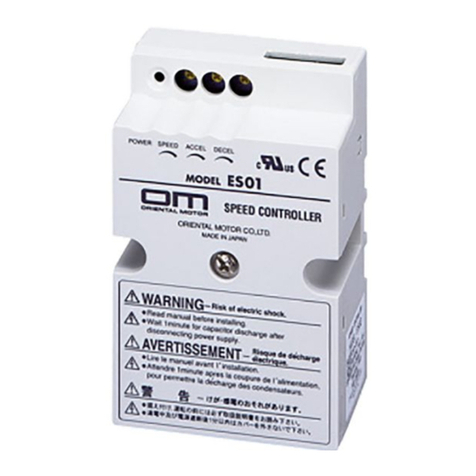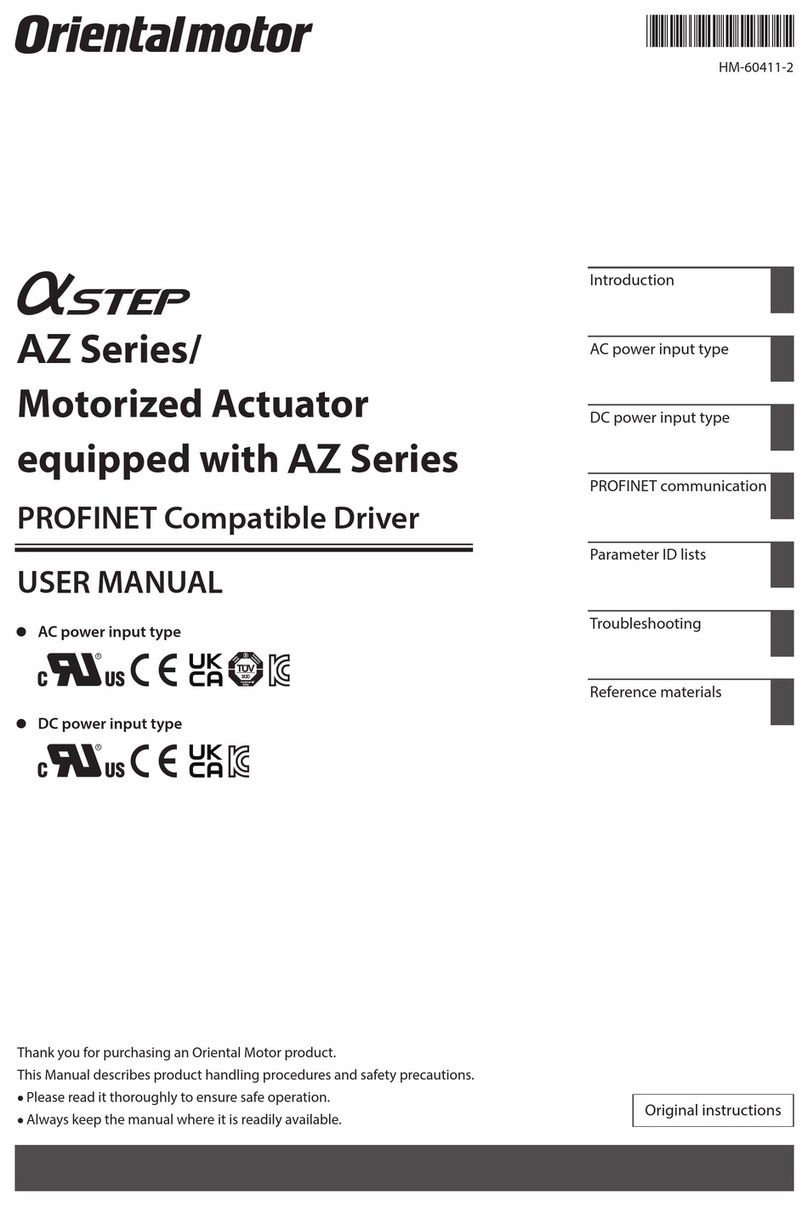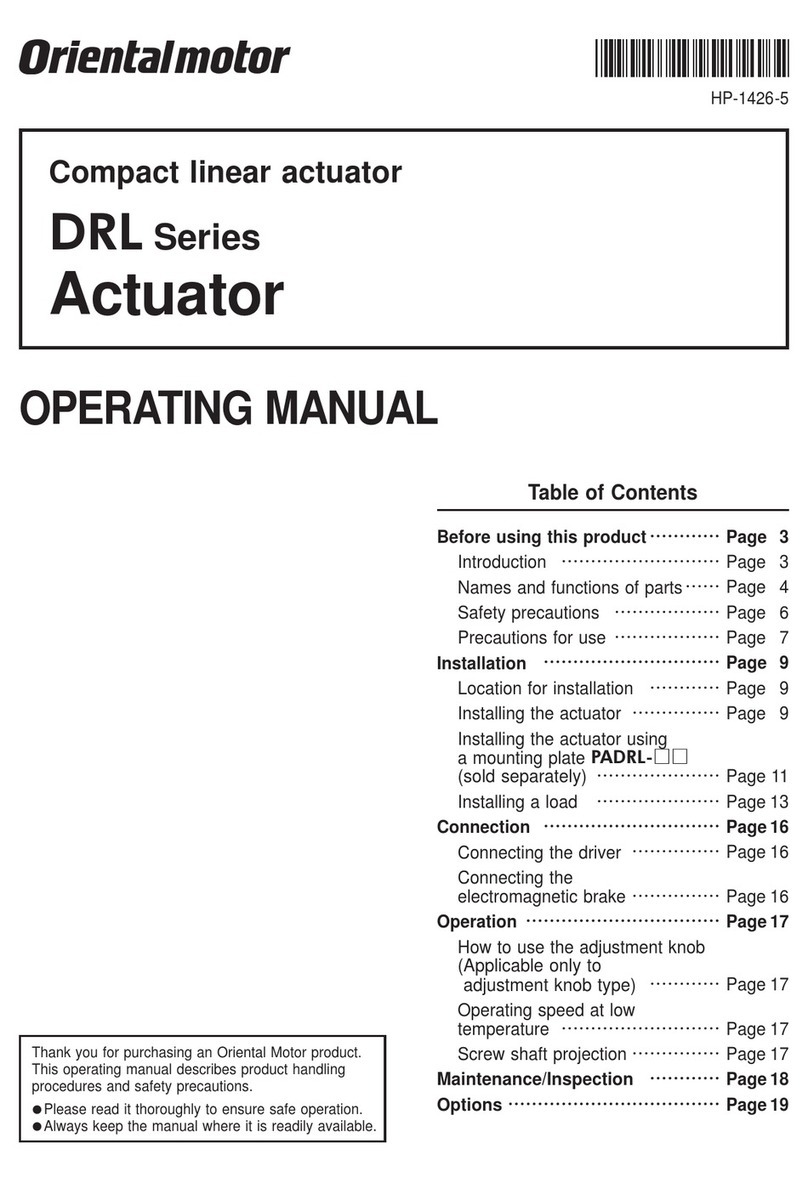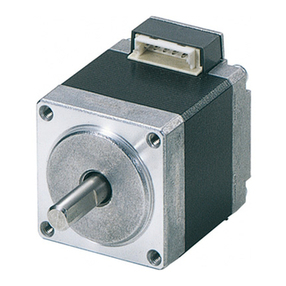
3 Precautions for use
−6−
3 Precautions for use
This section covers limitations and requirements the user should consider when using the DG series.
• Conduct the insulation resistance measurement or withstand voltage test separately on
the actuator and the driver.
Conducting the insulation resistance measurement or withstand voltage test with the actuator and driver
connected may result in injury or damage to equipment.
• Operate the actuator below the permissible torque.
Operating the DG series at torque outside the permissible range or keeping the output table locked may
damage the gear mechanism. Be sure to operate the actuator below the permissible torque.
• Do not apply moment load and thrust load in excess of the specified permissible limit.
Be sure to operate the actuator within the specified permissible limit of moment load and thrust load.
Operating it under an excessive moment load and thrust load may damage the actuator bearings (cross roller
bearing). See p.14 for details.
• Do not make an impact with the actuator.
Do not drop the actuator. Also, do not strike or hammer the motor unit and mechanical unit. Doing so may
cause the positioning accuracy decrease, the rotor position detection sensor damage and the actuator service
life reduction.
• Set the surface temperature of the actuators as follows:
The driver has an overheat protection function, but the actuator has no such feature. When using the actuator,
set its operating conditions (operating speed, operating duty, etc.) so that the following temperatures are
maintained.
When the home sensor set (sold separately) is not used
Use the actuator at the ambient operating temperature of 0 to +50 °C (+32 to +122 °F) and motor surface
temperature of 100 °C (212 °F) or less. If the motor surface temperature exceeds 100 °C (212 °F), the life of
the bearing (ball bearing) employed in the motor will be diminished to a significant extent.
When the home sensor set (sold separately) is used
Use the actuator at the ambient operating temperature of 0 to +40 °C (+32 to +104 °F) and motor surface
temperature of 90 °C (194 °F) or less. If the motor surface temperature exceeds 90 °C (194 °F), the
temperatures of the photomicrosensors employed as home sensors will rise and the life of the sensor will be
diminished to a significant extent.
• Use an electromagnetic brake type for an application involving up/down travel.
When the actuator is used in an application involving up/down travel, such as a lifter, use an electromagnetic
brake type to hold the load in position. To hold the load in position, apply the electromagnetic brake only
after the actuator has stopped. Do not use the brake to bring the moving actuator to a halt. Repeated braking
for such a purpose will wear the brake hub excessively, causing its holding ability to drop.
Since the electromagnetic brake is of the non-excitation type, it can also be used to hold the load in position
upon the occurrence of a power failure. However, this is not a secure means of holding the load. Do not use
the electromagnetic brake as a safety brake.
When the driver protection function is triggered, the actuator stops as the current is turned off. The user must
set a controller sequence that will cut off the power to the electromagnetic brake and hold the load in position
upon detecting an ALARM output turns OFF.
• Connecting an electromagnetic brake actuator
Provide separate power supplies for the control input/output and the electromagnetic brake.
Always use an optional extension cable for the electromagnetic brake type when connecting the actuator to
the driver. Connect the two lead wires for the electromagnetic brake, which extend from the extension cable,
to the DC power supply while ensuring the correct polarities of the leads.
Be sure to connect the supplied non-polarized varistor in order to protect the switch contacts and prevent
noise.
